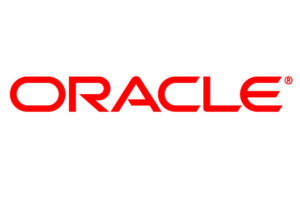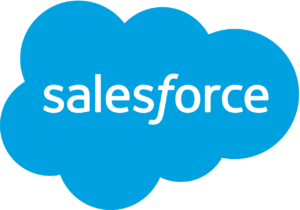Subscription sales surpass on-premises software

Software vendor financial results can be more interesting for ITAM & SAM managers than they might first appear. Looking at how the software vendors are performing on a quarterly and annual basis can give the savvy organisation some good insight. Who is likely to increase audits? Where might good discounts be found? What upcoming business model changes might impact us? Hints to potential answers for questions like this, and more, can be answered by taking a look at the vendor’s results. It’s clear that cloud is still driving software vendor revenues – but by how much?
In this article, we look at the most recent results for:
Autodesk

Q3 FY 21 saw revenue up 13% to $952 million which, to me at least, is a strong performance during a pandemic – especially as one could imagine that many of their customers have been negatively affected during 2020. In fact, CEO Andrew Anagnost stated they’ve seen usage in several APAC locations including China, Japan, and Korea and “most of” Europe rise above pre-COVID levels…although the US and UK are still lower. He also mentioned their large, enterprise deal activity increased during the quarter, including the signing of a 9-digit deal (that’s at least $100 million) over 3 years. He pointed to this as evidence of them being strategic digital transformation partners with their customers.
£884 million of the revenue (93%) came from subscription plans – a 24% increase – and maintenance plan revenue was down 56% to just $40 million. Clearly showing Autodesk’s shift across to a subscription model has made great progress and CFO Scott Herren (soon on his way to Cisco) said their transition to a “cloud-based recurring revenue model is complete”. Overall, 41% of revenue came from the “Americas” region and 38% from EMEA, with the remainder coming from APAC.
Audits were briefly mentioned too:
“Our efforts to educate our customers about the benefits of staying compliant with our subscriptions are yielding results. We are able to convert them to paying users in a customer-friendly manner. During the quarter, we closed eight deals over $500,000 with our license compliance team”
Making sure you’re compliant with Autodesk should be near the top of the list!
Further Reading
Autodesk results
Autodesk earnings call
Oracle

Their Q2 FY21 saw another relatively lacklustre 2% revenue increase to $9.8 billion alongside:
- Cloud services & license support revenue – up 4% to $7.1 billion
- Cloud license and on-premises license revenue – down 3% to $1.1 billion
There were more positive numbers too with Fusion Cloud ERP up 33% and NetSuite Cloud ERP up 21%.
Larry Ellison said there was more demand for Oracle Cloud Infrastructure (OCI) than they could supply, and they announced plans to open 3 new commercial cloud regions – in Dubai, the UK, and Chile – in the first half of 2021. Ellison also made his usual claims about the growth of Autonomous Database as well as saying Oracle are better/faster than Amazon and Snowflake and that several “large-scale” SAP ERP customers are moving across to Oracle, making them the “clear…leader” in Cloud ERP.
Interestingly, Safra Catz, CEO, said that over the last 4 years, Oracle have “doubled the percentage of revenue” derived from cloud sales with recurring revenue now accounting for 73% of total revenue.
Further Reading
Salesforce

Revenue for Q3 FY21 was up 20% to $5.42 billion and CEO Marc Benioff claimed that “no other major enterprise software company is growing at this rate”. To that end, they’re raising their FY21 revenue guidance to $21.11 billion and FY22 to $25.5 billion.
Of course, the big Salesforce news is their $27.7 billion acquisition of Slack. Mark Benioff is, naturally, excited about the prospects saying:
“This is a match made in heaven. Together, Salesforce and Slack will shape the future of enterprise software and transform the way everyone works in the all-digital, work-from-anywhere world”
It seems that Slack CEO Stewart Butterfield also has Benioff’s penchant for hyperbole, saying he believes it to be “the most strategic combination in the history of software”. My analysis of that deal is here.
Further Reading
Salesforce earnings
Slack announcement
VMware
![]()
Total revenue for Q3 FY21 was up 8% to $2.86 billion. “Subscription & SaaS” revenue grew 44% YoY to $676 million, surpassing on-premises license revenue for the first time (by $37 million) after the latter dropped 12%.
Alongside several announcements involving Kubernetes and automation, VMware also launched the “5G Telco Cloud Platform” and a 5G related partnership with Samsung too. VMware are continuing to expand their product portfolio and reach and look to be positioning themselves to be a key player in several areas over the coming years. They also announced “Project Monterey” which is focused on “evolving the architecture for the data center, cloud and edge” and looks to include concepts such as “AI, machine learning and 5G applications”.
Further Reading
Conclusion
As we see subscription sales surpass on-premises software, it’s clear this, and cloud technology, is the way forward for the vast majority of the software industry, with these results showing again that it brings positives across the board for software vendors. It also shows that software diversification is a strong theme with both Salesforce and VMware expanding beyond their traditional core as both companies look to position themselves in some of the next big spaces…collaboration software, 5G communications, and AI. Oracle are doing a lot of talking about their cloud capabilities and really see that as their future strength, rather than on-premises database licenses.
All this shows two things:
- From a tactical perspective, make sure you have a slick process for managing subscriptions and renewals
- From a more strategic angle, being constantly aware of who your key software vendors are – and where they’re heading over the next 5+ years – is key to successful portfolio and asset management
Can’t find what you’re looking for?
More from ITAM News & Analysis
-
Software Vendor Insights: What do the numbers tell us about the opportunities for ITAM negotiations?
What software vendor insights can be gained from the latest financial results from Amazon, Google, Broadcom, Salesforce, IBM and SAP? An important part of ITAM is paying close attention to the health of the companies we ... -
Flexera is first SAM tool vendor verified for Oracle E-Business Suite applications
Flexera has announced that it has been verified as the first software asset management (SAM) tool vendor for Oracle E-Business Suite applications. Almost anyone with an Oracle estate will be familiar with the company’s License Management ... -
ITAMantics - March 2024
Welcome to the March 2024 edition of ITAMantics, where George, Rich and Ryan discuss the month’s ITAM news. Up for discussion this month are. Listen to the full ITAMantics podcast above or queue it up from ...